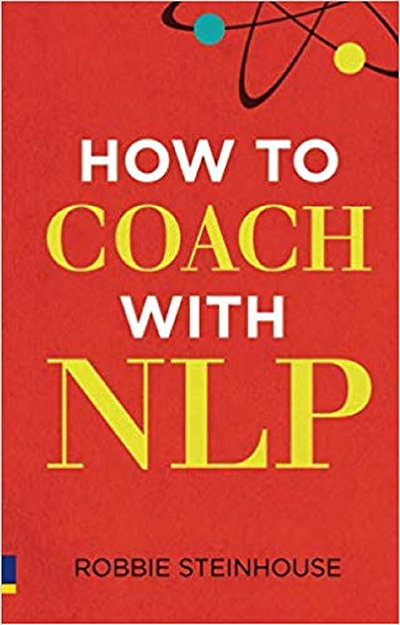10 Reasons Why Mindfulness is Useful

Mindfulness reportedly has huge benefits to your health, happiness, wellbeing, energy and effectiveness. Why then doesn’t everyone simply do it?
I believe the reason is that while you are learning how to master it, you need to also learn why you are doing it. Otherwise, it can simply become an unpleasant (and unsuccessful) experience of trying to control your thoughts. (I included a video of how to practice mindfulness in last week’s blog.)
Mindfulness: An Overview
When I first learnt to meditate about twenty-five years ago, I read widely into the philosophy of mindfulness, to try and understand this “why”. It gave me motivation, but more importantly it helped me work out what I was looking for.
Mindfulness is effectively the art of doing nothing. But that doesn’t sound like much of an achievement. So why put such an effort into becoming an expert at doing nothing?
According to an article written by two Harvard psychologists, Matthew Killingsworth and Daniel Gilbert, we spend close to 50% of our time thinking about what isn’t going on right now.
Although thinking is undoubtedly useful, past a certain point thinking is likely to be circular, if not potentially negative – certainly of little benefit. So, where does Mindfulness fit in?
Here are ten reasons why I believe that Mindfulness is helpful:
1. Mental wellbeing
By creating a space to notice our thoughts, we can also begin to judge if those thoughts are useful to us (or not). One of the key benefits I found of practicing mindfulness was developing the capability to label the type of thinking that I was doing, rather than being fully consumed with the thought itself. For instance, if I was telling myself a repetitive negative story, rather than entering into the familiar and unpleasant emotions that the story evoked, I would notice that this was precisely what I was doing instead. In doing so, I created a choice for myself — to do (or think about) something different.
2. The missing (and necessary) step to psychological techniques
Cognitive Behavioural Therapy (CBT) along with it’s NLP predecessor, the Meta Model, relies on the ability to categorize your thoughts. An example shared by both is the term ‘mind reading’. If I tell myself a story that so-and-so is angry with me, it may be true. But it is also possible they are preoccupied with some other matter, which has nothing to do with me.
When I can question my thoughts (i.e. by challenging the statement ‘they are angry with me’ with ‘perhaps I should find out before leaping to that judgement?’), I free myself from this negative thought and improve my emotional state. However, for this technique to work, I have to be able to enter a ‘zone’ where I am sufficiently calm and present to even notice my type of thinking. Therefore, without developing the skill of mindfulness, it is questionable how useful CBT is. Indeed, CBT is now often taught in combination with mindfulness.
3. Calming your system
Often our mind and emotions are caught in an underlying negative state. Stephen Gilligan calls this the ‘neuro-muscular lock’. Mindfulness helps us step out of whatever is troubling us, so we can cultivate an ‘inner-garden’ to retreat to from the problems of the outside world. This cultivation requires time and practice.
4. Enjoying the present moment
There is a classic mindfulness story of trainee monk approaching an old monk, who is sitting by a small stream watching the water. The trainee monk asks, “What is the secret of life, master?”. The old monk reflects for a moment and says, “Watching the stream.”
When I first see something of natural beauty, say a flowering tree or a mountain, I very quickly drift away from appreciating it and move into my inner-world of thought. Perhaps I label the thing as attractive. Some may reach for the phone and want to share it. However, I also wish I spent more time simply appreciating the experience. With over twenty years of teaching mindfulness, I have found that universally everyone has told me they wish they spent more of their life appreciating the world in this way.
Mindfulness is then not simply a practice of taking ten minutes each morning to ‘chill out’. It is cultivating our natural aesthetic response to the magnificence of the world that we partially lost after childhood, and regaining the wonder that is our true essence. It also doesn’t need to be only during peak experiences, but actually is best done during everyday pleasures. You can literally practice anytime by simply becoming present to what you are doing in your surroundings and noticing your feelings. A good time to do this is also during simple chores — clean mindfully, walk mindfully and especially listen and watch mindfully.
5. Reality is good for you
There is an old saying that goes, ‘the past is history, the future is a mystery, the present is a gift — that why is it called the present.’ We often value our thoughts and fantasies as we are so habituated into spending our time there. However, is all this thinking really good for us? I know a fool-proof method to feel bad: a) remind yourself of a negative story; b) talk about it to yourself. Works every time, as does worrying about a future scenario. Yes, we need to learn from the past and prepare for the future, but if we are spending excessive amounts of time simply feeling bad, we are actually ruining our lives. Mindfulness cultivates a value for the present moment. It has far more truth (and more to discover) then the re-runs we keep playing in our mind.
6. The present moment is healing
When you are feeling emotional pain, allowing yourself to stop thinking about the pain, but simply enter into the feeling, usually transforms the feeling. Simply accept the feelings without pushing them away, or magnifying them. Just sit with whatever is there within you. Emotions are something that are transitory. They come and go. They are how the mammal part of us learnt to care of our young. But they get very confused by our newly evolved thinking self. Indeed, it is often thinking that makes our emotions get stuck in one place. Mindfulness teaches us not to fear our emotions, but simply to ‘be with them’. This leads to a virtuous circle of mental wellbeing.
7. Balancing your energy
I read in a book called Buddhism Without Beliefs, by Stephen Bachelor, a phrase that has intrigued me for years: ‘People who describe themselves as lazy are usually hard working. People who describe themselves as hard working are usually lazy.’ I am not sure if this is true, but I like the way the principle applies to mindfulness and control.
Often people who habitually try too hard, don’t know that they do so. They try to use their will to control their lives. When they are met with difficulties, they habitually try even harder. This issue needs to be sorted out if they are going to be able to practice mindfulness (it also will help their life hugely in a myriad of other ways too.) If you want to relax and stop thinking then a part of your mind will try and sabotage this — your wilful mind wants to be in control. There is a good reason for this, as you will have learnt that without sufficient agency, you put yourself in danger.
However, this very force that was originally there to help you navigate the world and gain some control of its unpredictability is now having a detrimental effect on you. It won’t let you relax, it won’t let you rest — it is partially to blame for your own burn-out. The paradox is that it is self-destructive, without balancing itself with an opposing force. What is required is only about twenty minutes of practice a day. However, for that practice to succeed, there is a need to change your own mindset — a paradigm shift.
For mindfulness to work, there is a need to shift to accepting the present moment as if you had chosen it and surrendering to what is happening right now. Yes, outside of those twenty minutes you can revert to attempting to control your world, but for those twenty minutes of silent contemplation, you need to allow yourself to let go of that controlling impulse. Without an understanding that this is required for mindfulness to work, you will constantly battle against thoughts and remain confused about why you are even doing this.
However, when you allow yourself to let go and surrender to simply experiencing reality, eventually your happiness, mental wellbeing and energy will be greatly enhanced. At other times the opposite is true and we easily get lost in thought, it takes no effort to do this, it just happens. Strangely the solution is precisely the same — cultivating the discipline to stay alert and relaxed so you can return your focus to living within the present moment.
8. Improving your attitude
We often take our attitude for granted. Yet, in many ways, it is something we have chosen (or copied) along the way. A closely aligned field to mindfulness, created in ancient Greece, is the practice of Stoicism. Stoic meditations are a practice where you deliberately focus on things going wrong. By focusing your mind on the worst thing that could happen to you, afterwards you will feel grateful for what you have.
A good tip is to work your way up. If you want to practice this, try imagining something relatively bad and slowly expand and work your way up to something truly awful. The purpose is not to overly upset yourself, but to help overcome a phenomenon called Hedonic Adaption — that we eventually take almost everything good in our life for granted.
The core principle of Stoicism is a truth that life can suddenly, and unexpectedly, change for the worst. When this inevitably happens, how much can you prepare yourself, so it doesn’t undermine your tranquillity? Taken to an extreme, this philosophy can sound heartless and unrealistically harsh. However, a powerful further why is to build a robust mental attitude, so you can withstand tragedy and also stay available for the people who matter to you during tough times.
9. Duality
Another fascinating principle from mindfulness is the idea of duality. Is there a single ‘you’ that has thoughts and feelings, or is there another ‘you’ who can observe those thoughts and feelings? The truth is that no one really knows the answer to this. There is some unusual science that supports this principle, however. During some early neurological experiments at McGill University in Montreal, the neurologist Wilder Penfield put electrodes on the brains of patients, who had had their brain exposed by some terrible recent accident, but were briefly awake and alert before surgery.
What he discovered was that the electrode stimulated memories, so that the patient report they could see the memory, re-experience all the sensations and emotions at that time, but they were simultaneously aware that they were also in a hospital in the here and now, while observing those past experiences. Holding a belief that there is a ‘space’ you can enter where you can observe your thoughts and feelings, rather than being them is at the heart of mindfulness. This powerful idea gives you choice — choice to decide what you want to think about. Indeed, choosing if thinking is actually what want to do at all.
10. Perform at your best
The philosopher Bertrand Russell pointed out that the greatest threat to our happiness is to focus your mind on the next thing. When you are performing at your best, you are fully absorbed by what you are doing. This is known as a Flow State, often reported by athletes, artists and various performers as when they did their best work.
Conclusion
I hope this piece has answered the question of the ‘why’ to learn mindfulness. When you understand the benefits of something, you are motivated to practice. Yet that practice is often hard. Our mind resists new ways of being.
However, if what I have written makes sense to you, then the practice has a payoff which is great, perhaps even ‘the meaning of life’ — to learn to enjoy the quality of living, that in truth, only exists in the present moment.
Did you like this post?
Then check out our events and courses!
Where to find us
For posts, events, free open days and more, follow NLP School on:
What to read next
How to Make a Decision Under Pressure
5 Books for Personal Development During the Lockdown









